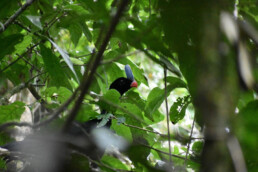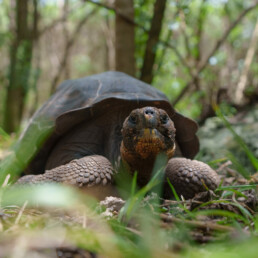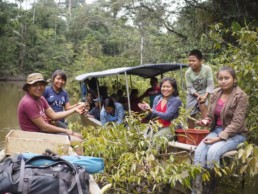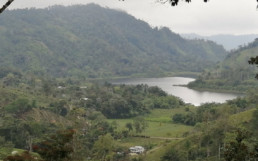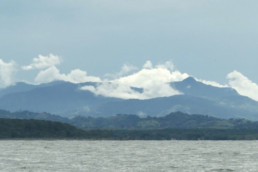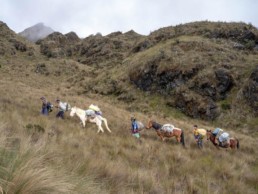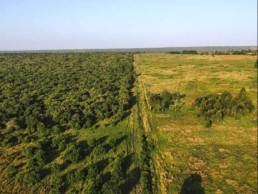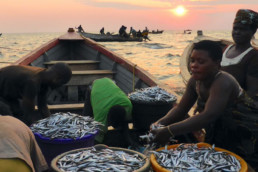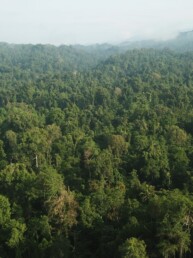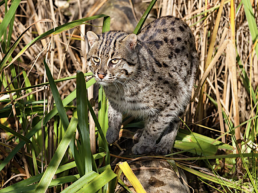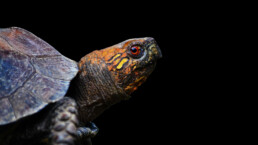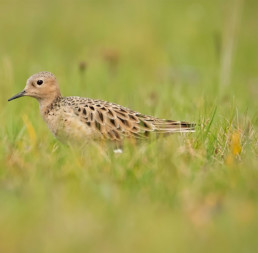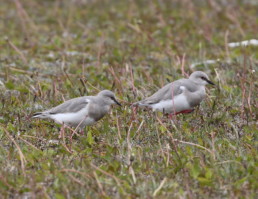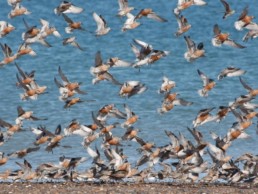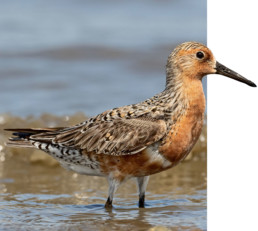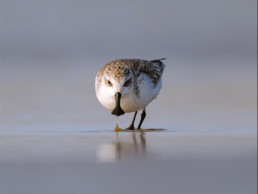The International Conservation Foundation supports local field partners who are actively engaged in safeguarding the rich biodiversity in places around the world. Biodiversity plays a pivotal role in maintaining the health and functionality of these ecosystems, and many species in these regions are endemic, holding unique ecological significance. Preventing extinctions here will help prevent cascading effects on global biodiversity and ecosystem stability. Furthermore, ICF acknowledges the cultural and indigenous knowledge intertwined with these landscapes, seeks to support not only the protection of flora and fauna but also the traditional knowledge, cultural practices, and livelihoods of indigenous communities.
Americas
Bolivia
Asociación Armonía is working to protect the The Critically Endangered and endemic Horned Curassow with the help of the Yuracaré People. This species is found within the TIPNIS, Carrasco and Amboró National Park though its habitat is heavily affected by illegal coca agriculture and human invasion.
Brazil
ICF supports three Kayapo NGOs—the Protected Forest Association, Kabu Institute, and Raoni Institute. They represent communities in the northeast, northwest, and southwest sectors of Kayapo territory, defending more that 9 millions hectares of pristine rainforest.
Brazil
Instituto Juruá is a Brazilian non-profit organization formed by conservationists, researchers and local environmental leaders in close partnership with rural communities and local associations. Their mission is to combine cutting-edge scientific research and traditional local knowledge to support positive initiatives for the use and management of natural resources across the Amazon, in order to promote biodiversity conservation, food security, health and income for indigenous and non-indigenous people.
Ecuador
The Jocotoco Conservation Foundation employs a multifaceted approach to restore Floreana’s biodiversity by eliminating invasive predators and reintroducing iconic endemic species. This helps to restore harmony and equilibrium to the ecosystem.
Ecuador
YAKUM works to protect indigenous forest and build cultural, medicinal and food sovereignty, through reforestation with carefully selected native tree species and territory mapping. In the Shuar language, YAKUM means “Howler Monkey”, the species with the loudest call in the animal kingdom – the call to action.
Ecuador
Our partner Fundación para la Conservación de los Andes Tropicales works to defend the humid forests of the Chocó Biogeographical Region of northwestern Ecuador support exceptional biodiversity, much of which is endemic to the region.
Panama
The NGO Native Future and local Wounaan communities are working to protect their traditional lands from the Majé Mountains to Panama Bay. A successful strategy led by the Wounaan has been a game- changer: it combines live satellite monitoring, border monitors, drone operators, and legal representation.
Peru
Since 1999, Conservación Amazónica (ACCA), a Peruvian non-profit, has focused on conserving and enhancing the vast and diverse Manú National Park, a stronghold for apex predators and rare species across Andean highlands, cloud forests, and lowland Amazonian forest.
Colombia
The Sierra Nevada de Santa Marta (SNSM), classified as a Key Biodiversity Area, appears to be the only place in the Americas with stable populations of high-altitude Harlequin Toads — the world’s most threatened genus of amphibians. Fundación Atelopus is dedicated to promoting and supporting the conservation of ecosystems and associated fauna, with a special focus on protecting amphibians and reptiles.
Costa Rica
The Osa Peninsula contains the largest mesic rainforest remaining on the Pacific slope of Central America, largely within Corcovado National Park. It has the largest expanse of mangrove wetlands on the Pacific slope of Central America and a unique coastal marine ecosystem—the Golfo Dulce tropical fjord. The Osa is estimated to house 2.5% of the world’s biodiversity while covering less than 0.001% of its total surface area, and was described by National Geographic in 2016 as “the most biological intense place on earth”.
Mexico
ICF supports two field partners to save the vaquita porpoise from extinction: The Cetacean Action Treasury and Pronatura Noroeste. The vaquita (Phocoena sinus) is the most endangered marine mammal species in the world. It has a very restricted distribution, occurring only in the upper Gulf of California in Mexico.
We strive to achieve lasting conservation gains by optimizing the balance between value, cost, and risk.
Africa
DRC
Local partner Strong Roots is dedicated to advancing the conservation of Grauer’s gorilla and other threatened species in the eastern Congo Basin. A community-based organization established in 2009, Strong Roots focuses on the intersection of conservation and sustainable development. Their efforts are strategically targeted at communities residing on the borders of Protected Areas and those inhabiting community forests, with the shared goal of fostering environmental preservation and harmonizing the coexistence of wildlife and local communities.
Kenya
Working with Maasai property owners, a community wildlife sanctuary of 12,600 hectares along a 15-kilometer stretch of cliff habitat favored by breeding vultures and falcons has now been established with a plan to increase its size in the future.
Kenya
The Mukutan Nature Conservancy is Kenya’s largest private reserve and is a refuge for elephants and other wildlife. Working with surrounding communities and neighboring reserves they are creating wildlife corridors to allow elephants safe passage from the the Rift Valley to Laikipia County, Mount Kenya and beyond.
Malawi
Ripple Africa, a charitable organization registered in both the UK and the USA, is dedicated to enhancing the environment and advancing local education in Malawi, Africa. Their aim is to empower communities to safeguard the endangered and economically significant fish species in Lake Malawi through the establishment of Fish Conservation Committees.
ICF aims to attain direct, enduring conservation gains that reduce threats to species or ecosystems.
Asia/Pacific
Indonesia
YANI’s mission is to preserve the unique biodiversity of Sulawesi, focusing on the Nantu Rainforest, for future generations of both Indonesian and global citizens. Nantu supports crucial populations of Sulawesi’s remarkable biodiversity on an international scale. This includes species like the Lowland and Mountain Anoas, Babirusa, Heck’s Macaque, Jatna’s Tarsier, and a rich avian diversity of over 100 species, more than 35 of which are endemic.
Indonesia
The Papuan NGO YAPPENDA is aiming to protect the biodiversity hotspots of the Cyclops Mountains and the Yahukimo Regency. An estimated 10% of the planet’s biodiversity is found in New Guinea. Their work involves working closely with the Yali people, an indigenous group deeply committed to defending their ancestral land.
Cambodia
Our field partner the Fishing Cat Ecological Enterprise has the ambitious goal of restoring the habitat of the threatened Fishing Cat and in doing so protecting and reviving Cambodia’s mangroves for communities, biodiversity and climate adaptation.
Cambodia
Marine Conservation Cambodia (MCC), a non-profit organization dedicated to advancing marine conservation and community livelihoods, is working to rehabilitate severely damaged marine ecosystems. In close partnership with the Cambodian Fisheries Administration, MCC is protecting key seagrass beds, coral reefs, and fish populations by deploying simple structures that prevent illegal trawling.
Vietnam
The Center for Technology and Nature Conservation is leading the study and protection of endangered primates and has recently discovered previously unknown new groups of these primates.
Vietnam
The Center for Technology and Nature Conservation is protecting the critically endangered Cuora picturata and other rare turtles in the forests of Khanh Hoa and Phu Yen, Vietnam.
Shorebirds
Bolivia
Asociación Armonía has placed significant emphasis on preserving high-quality grasslands to support several species of shorebirds within the Barba Azul Nature Reserve. The goal is manage a crucial southbound Buff-breasted Sandpiper habitat in the Beni Savanna during the non-breeding season.
Chile
Fundación Conservación Marina is crucial to safeguarding the vital habitats of migratory shorebirds like the Hudsonian Godwit in Chile’s Maullín wetlands, ensuring their protection for future generations. The Maullín wetlands are among the largest coastal wetlands in Chile (25,000 acres).
Argentina
Our goal is to reverse the decline of the Magellanic plover. Threats include reduced habitat quality of breeding areas due to sheep farming and the use of water bodies as watering holes; trampling of nests by cattle; disturbance by dogs and the use of all-terrain vehicles on the banks of lagoons.
Argentina
Bahía de San Antonio holds significant conservation value, particularly concerning migratory species and shorebirds. Bahía de San Antonio, Atlantic coast of northern Patagonia, 1,000 km south of Buenos Aires.
Mexico
Every February, Pronatura Noroeste supports an enthusiastic team of beach guardians known locally as the “pejerreinas” or “grunion queens”. Mostly local women from Golfo de Santa Clara, they rope off grunion spawning areas and intercept and restrict people, vehicles, or pets from entering areas used by thousands of shorebirds during this critical period of their migration and life cycle.
Four countries
The Spoon-billed Sandpiper, classified as Critically Endangered, breeds in Russia and migrates to Southeast Asia during winter, with only 100 known breeding pairs worldwide. Currently, 80 percent of the known population of Spoon-billed Sandpipers spend their winters in Myanmar, Bangladesh, China, and Thailand.

